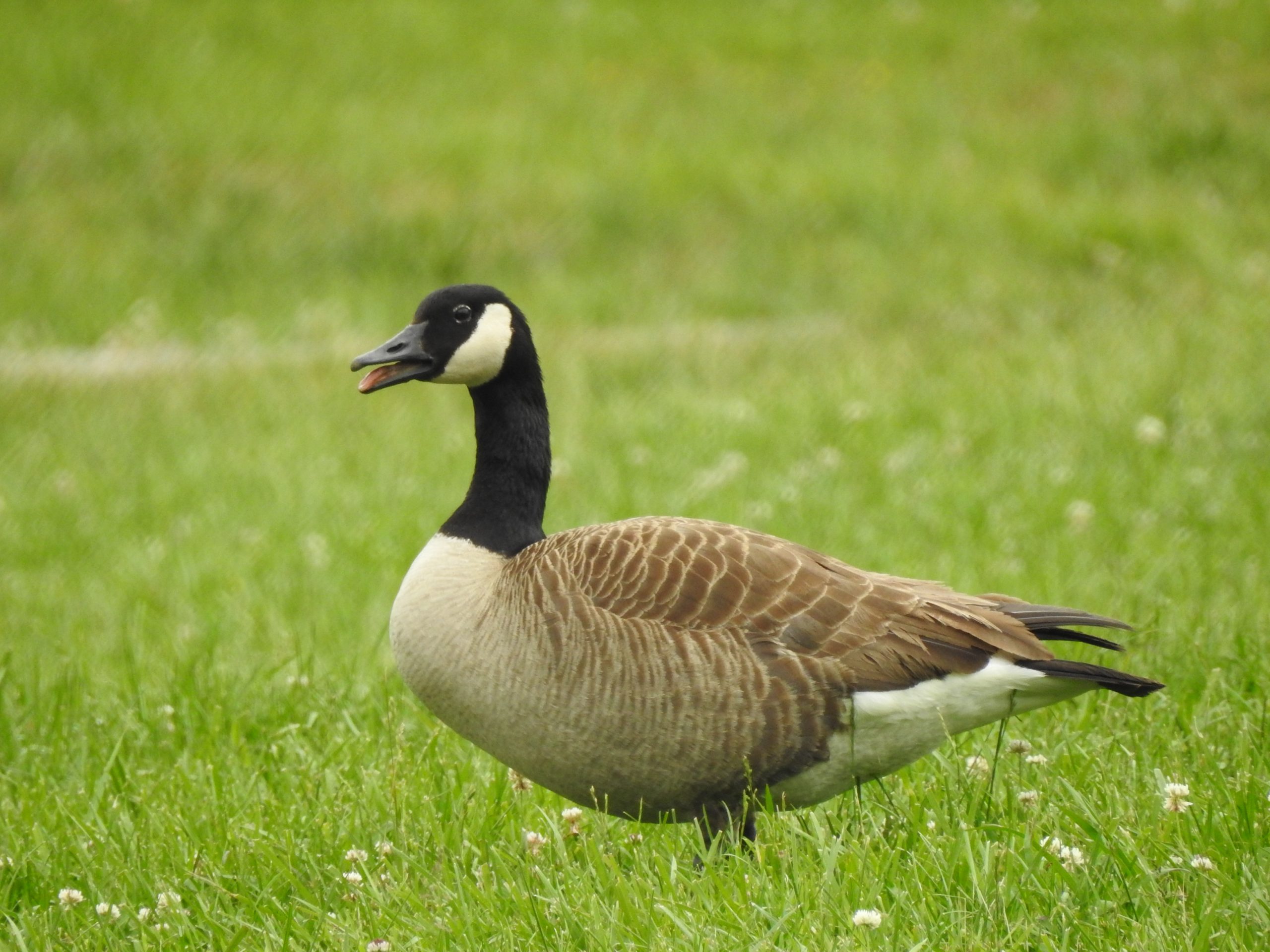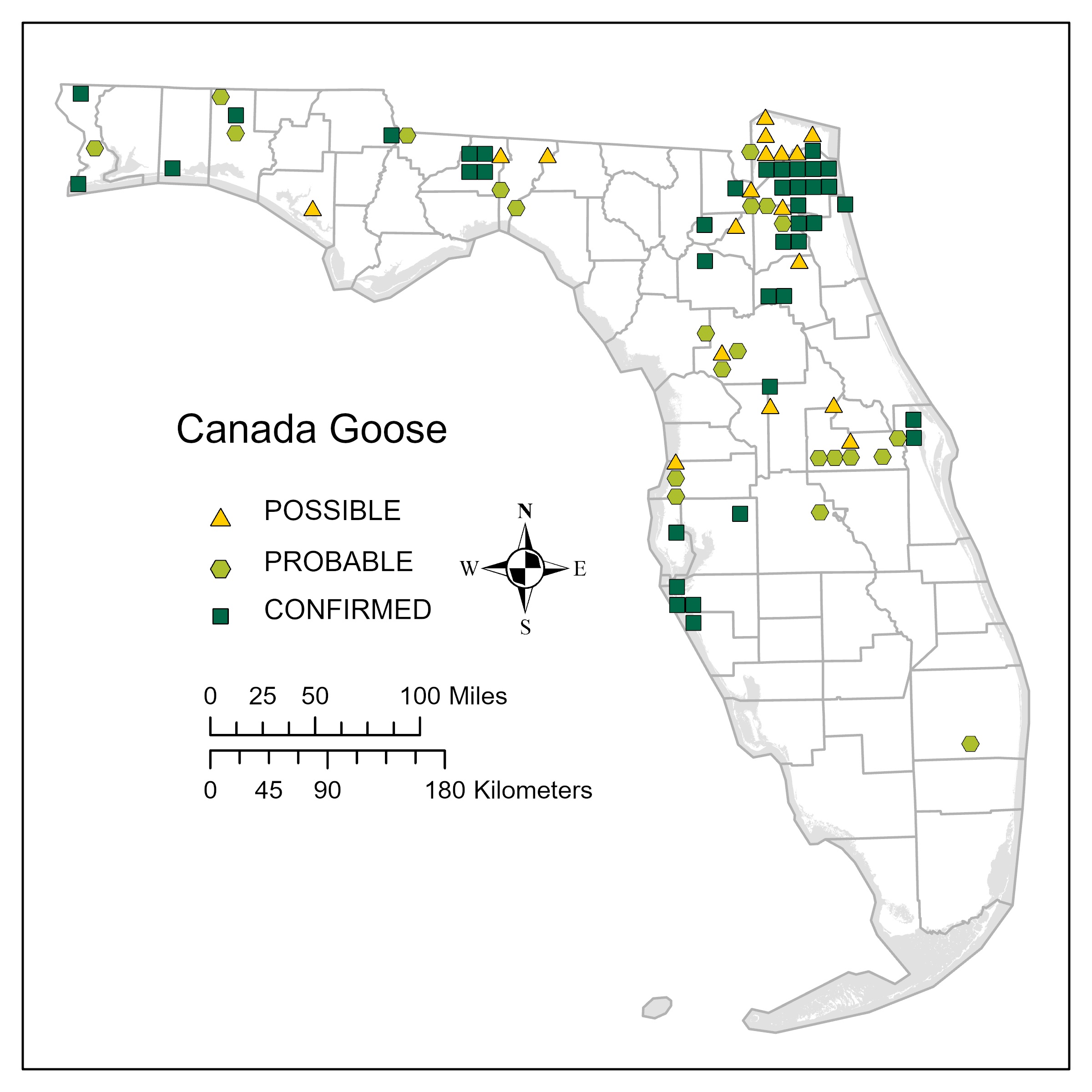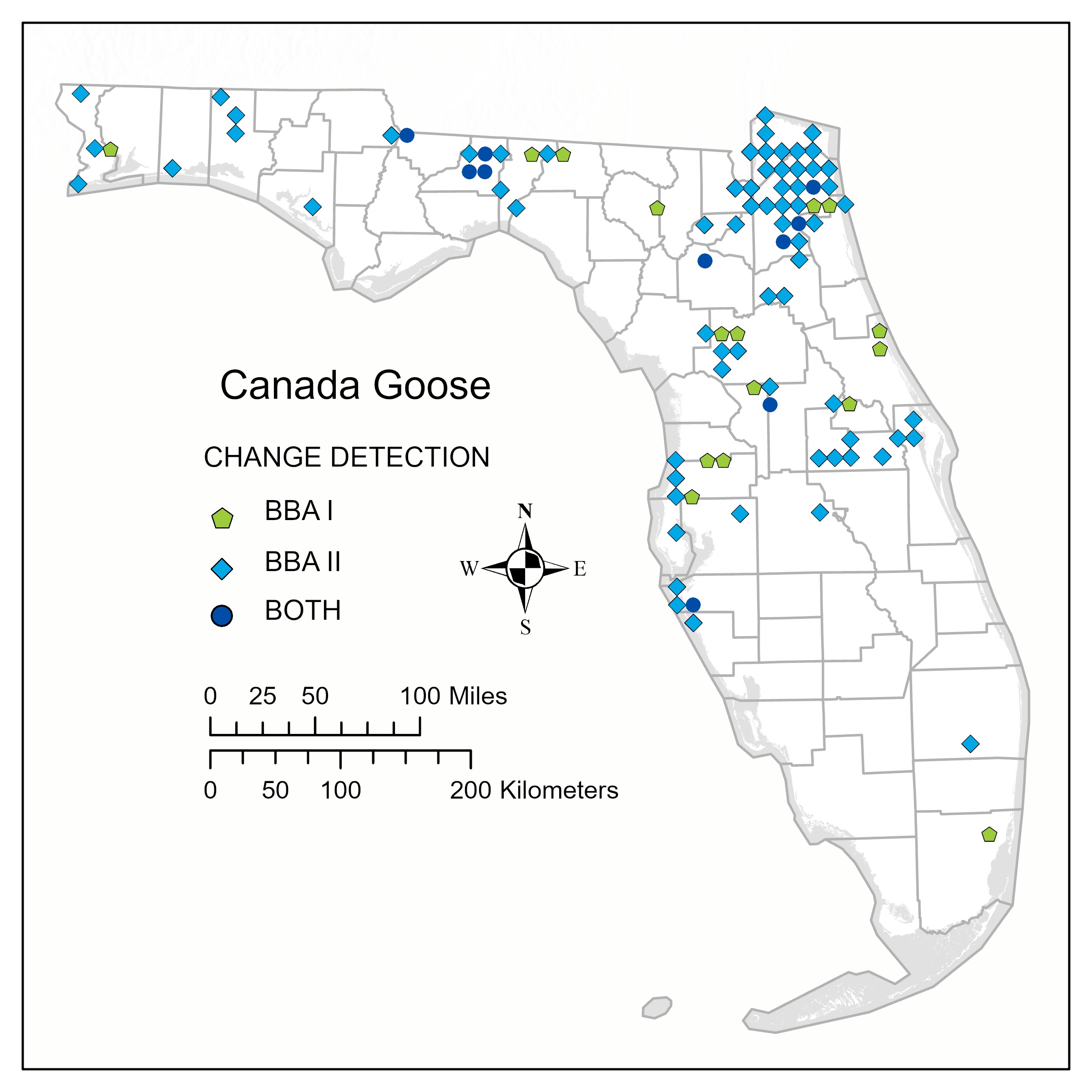Species Account
Simply put, the Canada Goose is the most widely distributed goose species in North America. Its breeding range stretches from the arctic coastal plain of Alaska to the northern half of Florida, while its wintering range extends as far south as Baja California and northern Mexico (Mobray et al. 2020). Currently there are 12 known subspecies of Canada Goose, 2 of which occur in Florida: Branta canadensis interior and B. c. maxima (Mobray et al. 2020). In the 1960s and 1970s, the FWC released several populations of B. c. maxima throughout the northern half of Florida for hunting purposes, and now these nonmigratory birds have established breeding populations in various counties including Leon, Alachua, Marion, Volusia, Santa Rosa, Manatee, Seminole, and Dade (Willcox and Giuliano 2006). Winter ranges of B. c. interior naturally extend into northwestern Florida (Mobray et al. 2020). There is also notable geographic variation within this species across its range, with body size decreasing from southeast to northwest (the opposite of Bergman’s Rule), and plumage darkness generally increasing from east to west (Palmer 1976, Johnson et al. 1979).
Citation: Walters, M. J., and S. K. Robinson. 2024. Canada Goose (Branta canadensis). In A. B. Hodgson, editor. Florida Breeding Bird Atlas II. Special Publication Number 9. Florida Ornithological Society, Tampa, USA.
Banner Photograph: Alexander Lamoreaux
Illustration: Diane Pierce
Canada Geese can be found in a variety of habitats but prefer to nest in areas with a permanent water source nearby and a clear view in all directions (Willcox and Giuliano 2006). Because Canada Geese are primarily grazers, with bills designed to tear blades and strip seeds from grains, they also prefer areas with abundant grass (Willcox and Giuliano 2006). In addition to prairies, parklands, coastal plains, tundra, and high elevation meadows, Canada Geese are also quite common in suburban and urbanized areas, such as parks and golf courses, where they are often seen in Florida.
Results from the BBA II show that confirmed Canada Geese detections are most heavily concentrated in Leon, Duval, Clay, and Manatee counties, with Seminole, Orange, and Marion counties showing several probable detections (Figure 1). Notable areas of population increase, compared to BBA I, include Jacksonville, St Petersburg, Clearwater, and Orlando, as well as the Florida Panhandle (Figure 2). Compared to a mere 20 confirmed breeding detections in BBA I, Canada Geese have now been confirmed in 39 quads for BBA II, bringing the total number of quad detections across all breeding code types from 26 to 79 (Table 1).
Despite the now common knowledge that 3 billion birds have been lost in North America since the 1970s, waterfowl, including the Canada Goose, are a notable exception to this troubling trend (Rosenberg et al. 2019). According to the BBS, the Canada Goose is experiencing a survey-wide estimated trend of 7.3 (95% CI = 4.1 — 9.1; n = 3,174) and 7.8 (95% CI = 0.8 — 15.3; n = 14) in Florida (Sauer et al. 2020; Figure 3).

Data

Table 1

Maps
Figure 1

Figure 1. Canada Goose quad-level distribution, Florida Breeding Bird Atlas II. Figures 1 and 2 are based on data collected across all six atlas blocks within a quad. Figure 1 is based on the highest breeding code observed in each quad.
Figure 2

Figure 2. Canada Goose quad-level change detection based on the simple presence or absence of a species at any breeding code level within the quad during each atlas.
References
Johnson, D. H., D. E. Timm, and P. F. Springer. 1979. Morphological characteristics of Canada Geese in the Pacific Flyway. Pages 56-80 in R. L. Jarvis and J. C. Bartonek, editors. Management and biology of Pacific Flyway geese. Oregon State University Bookstores, Corvallis, USA.
Mowbray, T. B., C. R. Ely, J. S. Sedinger, and R. E. Trost. 2020. Canada Goose (Branta canadensis), version 1.0. In P. G. Rodewald, editor. Birds of the world. Cornell Lab of Ornithology, Ithaca, New York, USA. https://doi.org/10.2173/bow.cangoo.01.
Palmer, R. S. 1976. Handbook of North American Birds, Volume 2: Waterfowl. Part 1. Yale University Press, New Haven, Connecticut, USA.
Rosenberg, K. V., A. M. Dokter, P. J. Blancher, J. R. Sauer, A. C. Smith, P. A. Smith, and P. P. Marra. 2019. Decline of the North American avifauna. Science 366(6461):120-124.
Sauer, J. R., W. A. Link, and J. E. Hines. 2020. The North American Breeding Bird Survey, Analysis Results 1966 – 2019: U.S. Geological Survey data release. https://doi.org/10.5066/P96A7675.
Willcox, A. S., and W. M. Giuliano. 2006. The Canada Goose in Florida. EDIS 2006(11). https://doi.org/10.32473/edis-uw245-2006.

